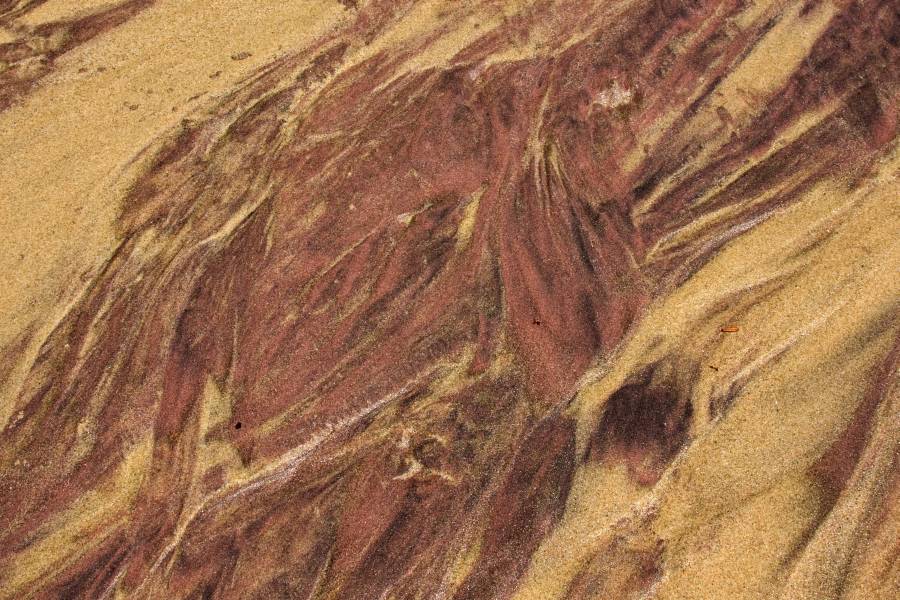Topics surrounding heavy minerals have been discussed here before but so far not as a rocky subject. I recently returned from Northern Norway, where I stumbled on a beautiful red-black-white folded metamorphic rock on a rocky coastline of the Varanger Peninsula. There were lots of interesting rocks, but something like this one really caught my eye.
http://picasaweb.google.com/107509377372007544953/2015#6191124032243014386
Magnetite, garnet and quartz in a metamorphosed placer deposit. Eastern coast of the Varanger Peninsula, Barents Sea, Northern Norway. Width of sample 18 cm.
http://picasaweb.google.com/107509377372007544953/2015#6190951699030876802
http://picasaweb.google.com/107509377372007544953/2015#6190951639222326754
More rocks from the same formation.
The rock is composed of quartz (white), magnetite (black) and red garnet (almandine). These minerals are very common ingredients of heavy mineral (placer) deposits. I cannot imagine any other genesis so I assume that this rock is a former heavy mineral concentrate which got buried and finally metamorphosed to a rock-type similar to quartzite. But obviously it is no quartzite because quartz forms clearly less than half of the composition. How to name it? I don’t know. I would like to know if some of my readers have an idea. That rock would be a nice example of a BIF (banded iron formation), but these rocks normally contain no garnet. It is still a potential iron ore because it is very rich in magnetite (strongly attracts a hand magnet) although I am afraid it does not form a deposit which is extensive enough.
UPDATE: Pedro Castiñeiras (@PetroMet) suggested Grt-Mag-Qtz banded granofels or Grt-Mag-Qtz metaplacer as a name for the rock. I like the latter more as it also gives information about the genesis, which in this case seems to be important.

This is how the source deposit of this rock might have looked like. This is a modern heavy mineral rich beach sand from the Pfeiffer Beach, California, USA.